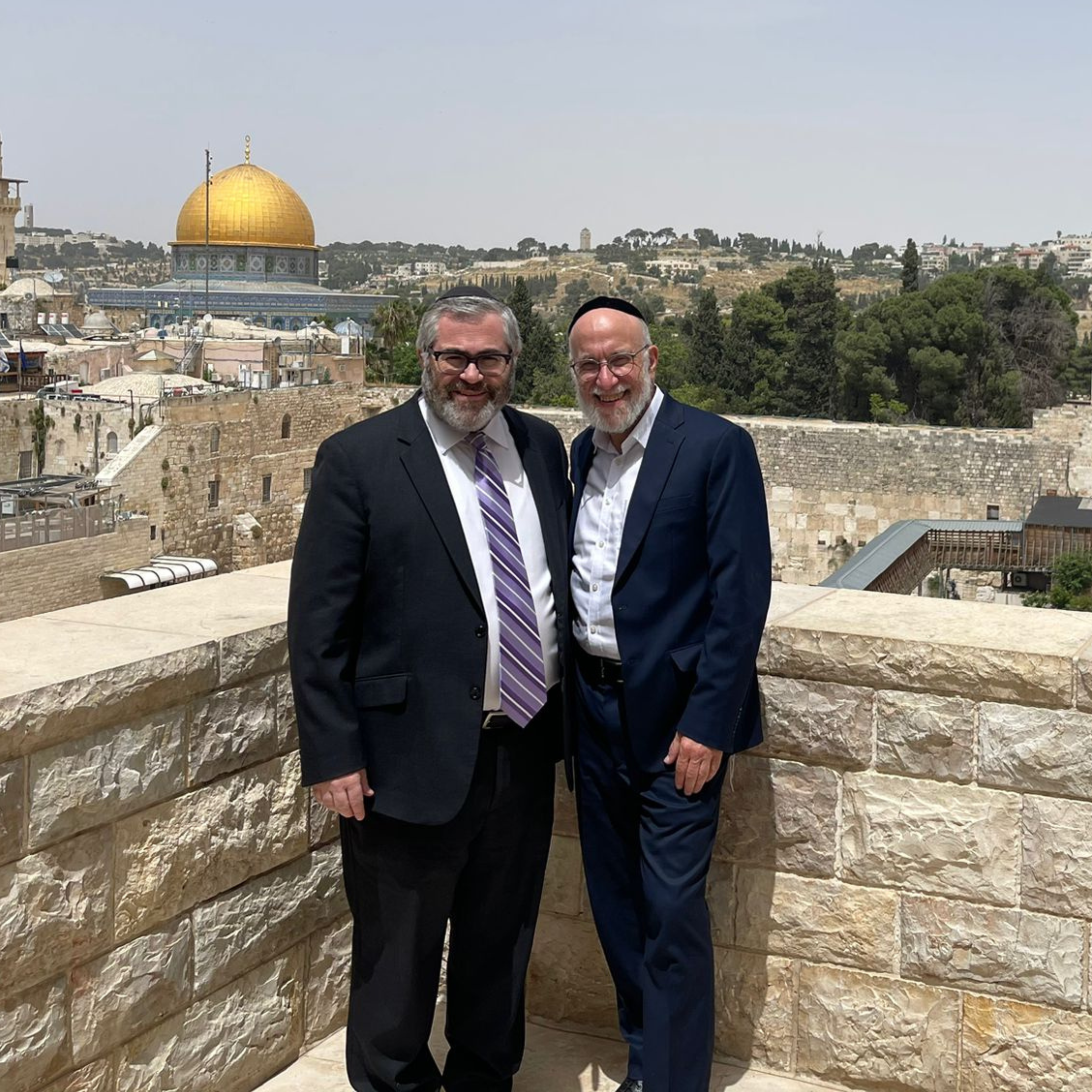Our Relationships
The second of the first perek’s zugot (the pairs who transmitted the mesorah) are Yehoshua ben Perachya and Nitai Ha’Arbeli. Both address the same topic — a person’s social circles. Yehoshua ben Perachya speaks about the friends one should seek to develop relationships with, while Nitai Ha’arbeli teaches us who to avoid.1
The Good and the Better
The very beginning of the Torah emphasizes the importance of our interpersonal relationships. After Bereishit’s first perek tells us (multiple times) that Hashem saw His creations as good, perek bet introduces (for the first time) something not good. “Lo tov heyot adam levado — it is not good for man to be alone.”2 Living alone is both morally wrong as well as unnatural and abnormal.
The world’s first generations teach us how destructive living only for oneself can be. The pre-mabul generations lived selfishly, with no care for one another. They raped, murdered and trampled each other. Their destruction of society impacted the whole world and “forced” Hashem to restart creation. Our society and our world can only survive, when we transcend our natural selfishness and care for one another.
Friendship is not just a responsibility we have towards others; it is important for our own healthy personal development as well. Sefer Kohelet gives two reasons why (in its words) “two are better than one.”3 The first is utilitarian: “When one falls, the other can help him up.”4 Having a friend means having someone to turn to in our time of need. Two people can help each other accomplish more than either could have on their own.
Friends help us spiritually as well. They help us grow in avodat Hashem5 by offering constructive criticism, feedback on our ideas and guidance about our conduct.6
Kohelet’s second reason relates to the importance of the relationship itself. “Even if both friends fall and are unable to help each other up, at least they can warm (console) one another.”7 People need to share with others,8 to the point that many prefer death over loneliness.9 We are created this way, because we are meant to connect to others in a way that helps both others and ourselves.
Appreciating the great significance of friends and friendship, Yehoshua ben Perachya encourages us to create a relationship with a rav and acquire a friend. The rav helps us determine our life’s direction, and our friends offer a context in which we can share and grow.
Choosing Friends Well
Though Yehoshua ben Perachya mentions “acquiring a friend” without specifying the type, we should, of course, be careful to choose our friends judiciously. The Rambam elaborates on the different types of friends in both his commentary to the mishnah and in his Mishneh Torah.
In his Mishneh Torah,10 Rambam introduces his codification of our mishnah by emphasizing that “man is innately drawn towards and impacted by the ways of his friends and surroundings.” It is critical to surround ourselves with people who share our core values, because our values will inevitably come to reflect those of our friends.
Our choice of friends is even more critical in the world of social media, where we interact with thousands of virtual “friends.” Our choice of friends determines the content and perspective to which we are exposed. Though we are not commanded to live in an echo chamber, we should ensure that our inner circle consists of those who reinforce our values.
Four Levels of Friends
In his commentary to the mishnah, the Rambam delineates four levels of friendship:11
The first — a utilitarian friendship — is a situation where friends share a common need or challenge they address together.
The second type are friends who share common tastes and get enjoyment from the seeking and enjoying of pleasures together.
A deeper level is a friend we can trust to share sensitive information with. Such a friend is a “real” friend the Torah describes as “rei’ihu.”12
The Rambam calls the highest level of friendship an “ohev ma’alah” — a friend with whom one shares the same sense of mission. This shared purpose allows people to work together to realize common goals.
Ideally, all Jews should share this kind of relationship with one another. Our common understanding that Hashem placed us in this world to serve Him should allow us to transcend our narrow needs and interests, and work together to sanctify Hashem’s name.
This explains why we start the wedding sheva brachot with the berachah of “Shehakol bara lichvodo — that all was created for His honor.” At first glance, the berachah seems unrelated to the wedding. In light of the Rambam’s explanation of the highest level of friendship, we can explain that this berachah serves as the foundation for a Jewish married couple. Only if both parties recognize that they were each created for the glory of God, can they have a true relationship and marriage — one in which they transcend themselves and work towards shared goals.
How to Acquire
How does one develop meaningful friendships? What does Yehoshua ben Perachaya mean by “acquire?” The Rambam13 explains that one acquires friends by acting towards others in a way that others appreciate. Naturally, people see the world through their own lenses. Forging relationships with others hinges on our ability to put ourselves in their shoes.
This explains the connection between Yehoshua ben Perechaya’s third statement, “Hevay dan et kol ha’adam l’kaf zechut — judge others favorably,” and the first part of the mishnah. Judging others favorably is important in its own right, but it also helps us develop friendships. Endeavoring to see the good in another’s actions is part of seeing things from their perspective. Doing so brings us closer together and makes friendship possible.
We live in a world in which we can interact with more people more quickly than in the past, but from a virtual distance. We should appreciate the value and importance of true, meaningful friendships and invest the extra effort required to develop them. Additionally, we should appreciate the importance of maintaining our relationship with our rabbonim, who can continue guiding us throughout our lives.
Rabbi Reuven Taragin is the dean of overseas students at Yeshivat HaKotel.
1 The Maharal (Derech Chaim 1:7) teaches that relationships with those outside of one’s home are the focus of this mishnah, following the previous mishnah’s teachings about who should be included inside one’s home — talmidei chachamim and the needy. The inclusion of a teacher — a rav — here, is different than in Mishnah 16. There, the point of the rav is to facilitate the next phrase, “histalek min hasafek — avoid doubt” by asking for psak. Here, the focus is on the relationship itself.
2 Bereishit 2:18.
3 Kohelet 4:9.
4 Kohelet 4:10. See also pasuk 12.
5 See Rabbeinu Yonah to Masechet Avot 1:6.
6 See Me’iri to Masechet Avot 1:6.
7 Kohelet 4:11.
8 The Kuntres Ha’sfeikos (in his introduction to his brother’s sefer — Ketzot Hachoshen) posits that even a person who had the great zechut of going up to Shamayim and seeing everything that was there, would not be satisfied until he was able to come down and share the experience with his friends.
9 Ta’anit 23a. This was said in the context of the story about Choni HaMeagel , who slept for 70 years. When he woke up, entered the beis medrash and discovered that all of his friends and contemporaries had long since passed away, he asked to die as well.
Similarly, many explain that the reason a metzora is considered like a “meit” is because he is forced to live alone (outside the camp).
10 Mishneh Torah, Hilchot De’ot 6:1.
11 Rambam to Avot 1:6 (quoting Aristotle).
12 Bereishit 28:12, 20. This may also explain the usage of the term in sheva brachot.
13 Ibid.











